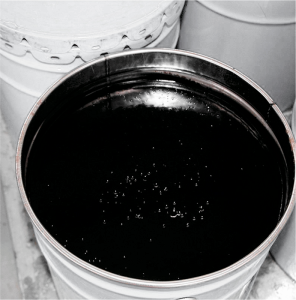
Understand the composition and manufacturing process of gravure ink
2024-01-04
In the publishing and printing industry, gravure ink is a very important type of ink. This article will introduce the composition, manufacturing process, and characteristics and performance of gravure inks.
1. Definition and overview of gravure ink
Gravure ink is a kind of ink specially used for gravure printing. It is made by mixing pigments, binders, solvents and other additives, and has good fluidity and adhesion.
2. The importance and application of gravure ink
Gravure ink is widely used in packaging, printing advertisements, bills and books, etc. It delivers excellent color reproduction and image clarity while being durable and resistant to wear and tear.
3. Composition of gravure ink
A. Pigment
The pigments used in gravure inks can be organic or inorganic compounds that are finely ground to ensure even dispersion in the ink.
Types of pigments used: Introducing the types of pigments commonly used in gravure printing inks, such as organic pigments, inorganic pigments, etc.
The role and significance of pigments: Explain the role of pigments in gravure inks, including providing color and pattern effects.
B. Adhesive
Binders are polymers or resinous substances in inks that help bind the pigment particles together and keep them attached to the printing surface.
Types of adhesives used: Introducing the types of adhesives commonly used in gravure inks, such as polymers, resins, etc.
The role and importance of adhesives: Explain the role of adhesives in gravure inks, including providing stability, durability and adhesion.
C. Solvent
Solvents are liquids used to dissolve binders, pigments, and other additives to form a uniform ink solution. They enable the ink to flow smoothly during the printing process and evaporate quickly.
Introduce the types of solvents commonly used in gravure printing inks and their characteristics.
4. Manufacturing process of gravure printing ink
An overview of the manufacturing process of gravure ink, including the preparation, grinding, mixing and filtration of raw materials.
5. Characteristics and performance of gravure printing ink
A. Printability and color reproduction: Explain the performance of gravure ink during the printing process, including fluidity, flatness and color reproduction capabilities.
B. Drying time and abrasion resistance: Introducing the drying speed and resistance to abrasion of gravure ink.
C. Adhesion, flexibility, and durability: Discuss the adhesion, flexibility, and durability of gravure inks on different printing materials.
6. High-quality gravure ink
If you want to get high-quality gravure printing ink, Dery is your best choice. As a professional gravure printing ink manufacturer, Dery can provide you with high-quality products and services. Welcome to contact us for detailed ordering information!
Through the above introduction, we understand the composition, manufacturing process, and characteristics and performance of gravure ink. Gravure inks play an important role in the printing field, providing exquisite patterns and color effects for a variety of products. In the future, with the development of technology, gravure printing inks will continue to innovate and improve.

